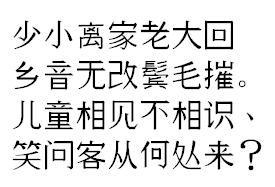Character (computing) facts for kids
For computers, a character is like a single building block of text. It can be a letter (like 'A' or 'b'), a number (like '1' or '9'), or a punctuation mark (like '!' or '?'). These are the things you see on your screen or when you print something.
There are also some special characters you can't see. These are called control characters. For example, when you press Enter on your keyboard, a control character tells the computer to start a new line. The actual shape of a character that you see on screen or paper is called a glyph.
Computers only understand numbers. So, they use special number codes to represent each character. For instance, in a system called ASCII, the number 65 stands for the letter 'A'. When the computer sees the number 65, it knows to show the 'A' glyph on the screen. The way the 'A' looks might change a bit depending on the font you use, or if it's bold or italic. But inside the computer, it's still stored as the number 65.
Contents
How Computers Understand Characters
ASCII: The First Big Code
One of the first ways computers stored characters was using ASCII. This system uses 7 bits for each character. This means it can store 128 different characters. That's enough for numbers (0-9), uppercase letters (A-Z), lowercase letters (a-z), and most common punctuation marks like spaces and parentheses. It also includes some control characters.
However, 128 characters aren't enough for all the letters used in other languages. For example, languages like German and Scandinavian languages use letters with umlauts (like ä, ö, ü). Some older computer systems tried to add an 8th bit to ASCII to get 128 more characters, but these extra characters often changed from one system to another. And even then, it wasn't enough for languages with many unique characters, like the thousands of Chinese characters.
Unicode: A Code for Everyone
To solve this problem and include characters from all languages, Unicode was created. Unicode uses 16 bits to store characters, which allows for 65,536 different characters! This is enough space for almost every character in every language around the world.
ASCII is still used a lot, especially in English-speaking areas. The Internet first started in English. Until 2010, URL addresses (website addresses) could only use certain ASCII characters. If a URL needed a character not supported by ASCII, it would be replaced by a '%' symbol and a number. For example, a space character in a URL would become "%20". But since 2010, Unicode is allowed in URLs. This means people who speak Russian, Greek, Chinese, or other languages can now see domain names in their own language!
Related Pages
See also
 In Spanish: Carácter (tipo de dato) para niños
In Spanish: Carácter (tipo de dato) para niños


